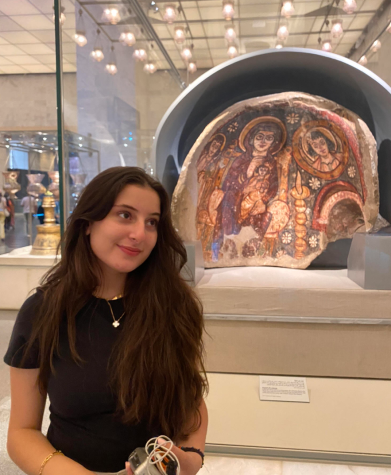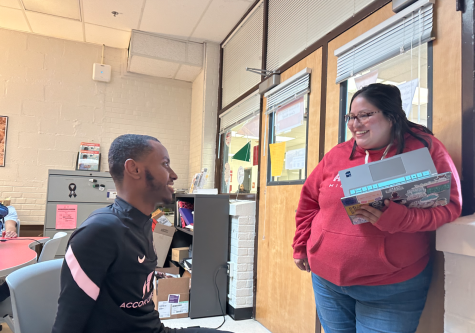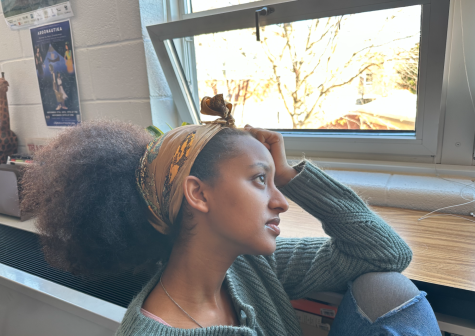The modern day effects on body image
Back in the day, it was uncommon to hear the phrase “body positivity,” but now it is all over social media.
There are hundreds of social media influencers such as Ashley Graham, Sienna Mae Gomez, and many more that advocate for body positivity. The former is a model while the latter is a TikToker, but despite having different audiences, they both relay the same message.
You may be thinking “What is body positivity?” Body positivity is a movement that was created to empower women and men of all sizes and create a loving and accepting community.
The movement was created by Black women in the 1960’s and has become popularized over the years. In fact, it originally began with the protesting of discrimination against overweight individuals.
Sophomore Maya Mann says she does not care too much about social media because she is an athlete.
“I mostly use social media to help with swim and recognition but I don’t look down on myself because I’m a swimmer and there are huge physical differences between a swimmer, someone who plays soccer, or even someone who is not physically active.”
She continues by saying, “Another factor is I’m healthy as can be so there’s no reason for me to be insecure. I don’t think social media has helped my body image that much because I’ve always been pretty confident and I don’t look for validation in other’s opinions.”
However, social media has not always been the most positive place for the body positivity movement. For years, the narrative has been that “skinny” bodies are the beauty standard and social media plays a big role in enforcing that.
A big platform both positively and negatively affecting body image is TikTok, where many influencers either promote self-love no matter what, or create “diet plans” and “workout routines” for their followers to attain that “hourglass figure.”
Junior Hana Wasuge says that social media has not impacted her body image at all.
“To be completely honest, I don’t really pay attention to influencers these days and I try and keep a positive outlook on things.”
Today, many influencers get cosmetic work done but fail to make that information public, creating a false beauty standard for their followers.
This is extremely harmful, especially to their younger fans who start to compare their features to the false ones their role models portray on social media.
Although there is no problem whatsoever with getting cosmetic work done, these influencers claim to be 100% natural and push many diet plans or weight loss pills onto their followers as well.
Sophomore Ellie Davis thinks social media has impacted her body image in a negative way.
“I am constantly comparing myself to other girls on TikTok and Instagram. I hate that I do this, but I can’t stop.”
Davis also mentions the male input on their preferred body choice. “It’s honestly really hurtful and I have gained insecurities due to these posts.”
Despite that, Davis acknowledges that she has come across multiple accounts run by women who encourage self-love and as a result, have helped her love herself.
However, she also notes that “there are days where all I do is compare myself to social media influencers, which leads me to hate how I look.”
There was a study in 2017 on the adolescent response to social media browsing and the results were astonishing, revealing that teenagers tend to compare themselves to their following lists, which can create further problems such as eating disorders or mental health issues.
A scientist has even stated that she believes there is more of an external pressure pushed on teenage girls because of social media that has established an unrealistic beauty standard. Unfortunately for teen girls, they often have a hard time separating reality from expectations.
There has always been a beauty standard set for women that is often unattainable.
For example, in the 1980’s, it was very common to walk into a grocery store and see models on magazines or in movies and they usually all had the same body type: slim, petite, and white.
Teens are still constantly reminded of these standards, but this time it is due to their frequent use of social media rather than tangible objects such as tabloids.
The most recent beauty standard that was set is the “hourglass figure,” a body type many teenage girls find themselves trying to achieve. Youtubers, for example, are partially responsible for encouraging these standards.
During quarantine, Youtuber ChloeTing’s hourglass abdominal workout went viral for being mostly effective, but it also came under fire for being too intense as well.
I believe that who you follow on social media will impact your body image because if you are following body positivity accounts, then you are more likely to be surrounded by love coming from people of all shapes and sizes.

Senior Sereene Darwiesh has been on The A-Blast since freshman year. She spends her time reading and hanging out with friends, her hobbies consist of baking...





